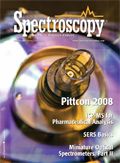SPIE Defense + Security Conference Preview
A preview of one of the premier events for the security and defense industries.
The SPIE Defense +Security conference, which integrates the discontinued Optics East conference, will take place on March 16– 20, 2008, at the Orlando World Center Marriott Resort and Convention Center in Orlando, Florida. The purpose of the meeting is to bring together leading scientists and engineers from industry, military, and academia doing cutting-edge work in materials, technology, systems, and devices.
Exhibitors will be displaying:
- Defense and security applications
- Laser and sensor technologies
- Displays, guidance, and navigation
- Modeling and simulation
- Signal and image processing
- Sensor testing and calibration
- Data mining technology
- C3I, airborne reconnaissance, and systems operations
- Navigation for tactical applications
- Biometrics and aviation security
- Forensic technologies
- Unmanned vehicles
Defense Leaders
The event will feature leaders in the defense community, with representatives from the US Navy, Army, and Air Force, DARPA, Lockheed Martin, NASA, Raytheon, and other top organizations.
Highlights of the conference will include:
- A panel of chief technology officers is being planned to discuss where the industry is headed.
- Over 45 conferences covering the latest technologies and applications for the defense and security community.
- A 400+ product exhibition where attendees can find the most current hardware, interact with exhibitors, and increase awareness of product developments across the broad spectrum of infrared, sensing, and image technology.
- An education program featuring courses and workshops designed to bring attendees up to date on the hottest technologies or get attendees up to speed with the background basics they need.
Courses and Presentations
The SPIEDefense + Security conference will present 65 half- and full-day courses covering such topics as thermosense, laser sensing, unmanned systems, and target acquisition. The meeting will also feature plenary speakers, workshops, panel discussions, poster receptions, and more. Among the list of plenary presentations are:
- Symposium-Wide Plenary Presentation — The Honorable Jay Cohen, Under Secretary for Science and Technology, U.S. Dept. of Homeland Security
- Display Track Plenary Presentation — Display Content in Advanced NVG and HMD Systems: A Pilot/Flight Surgeon's Concerns, Joseph (Chuck) Antonio, M.D., Naval Air Warfare Ctr.
- Space Technologies and Operations Track Plenary Presentation – Deep Space Flight of Hayabusa Asteroid Explorer, Hitoshi Kuninaka, Junichiro Kawaguchi, Japan Aerospace Exploration Agency
- Space Technologies and Operations Track Plenary Presentation — Protecting the Moon's Environment, Jeffrey Maclure, International Academy of Astronautics and International Institute of Space Law
- Tactical Sensors and Imagers Track Plenary Presentation — Radar Horizons, Joseph R. Guerci, Consultant
Registration
Visit the SPIEDefense + Security web page at www.spie.org/defense-security.xml for more information and to register online.
SPIE
P.O. Box 10
Bellingham, WA 98227-0010
Phone: (888) 504-8171; Fax: (360) 647-1445
Email: Exhbitions@SPIE.org

LIBS Illuminates the Hidden Health Risks of Indoor Welding and Soldering
April 23rd 2025A new dual-spectroscopy approach reveals real-time pollution threats in indoor workspaces. Chinese researchers have pioneered the use of laser-induced breakdown spectroscopy (LIBS) and aerosol mass spectrometry to uncover and monitor harmful heavy metal and dust emissions from soldering and welding in real-time. These complementary tools offer a fast, accurate means to evaluate air quality threats in industrial and indoor environments—where people spend most of their time.
NIR Spectroscopy Explored as Sustainable Approach to Detecting Bovine Mastitis
April 23rd 2025A new study published in Applied Food Research demonstrates that near-infrared spectroscopy (NIRS) can effectively detect subclinical bovine mastitis in milk, offering a fast, non-invasive method to guide targeted antibiotic treatment and support sustainable dairy practices.